All about the mantra "Om Mani Padme Hum"
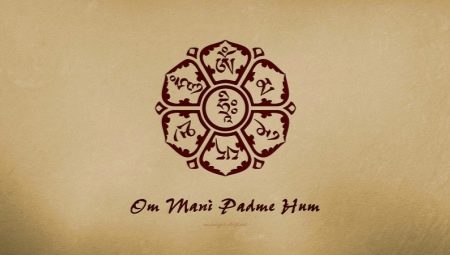
Om Mani Padme Hum is one of the most important sacred texts, it is associated with the Buddha of compassion and mercy. In the exact translation from Sanskrit, Avalokiteshvara means "listening to the sounds of the world", it is no coincidence that Buddha vowed to be distracted by the requests of all who turn to him for support and help.

Features and meaning
The history of the mantric text "Om Mani Padme Hum" is associated with an ancient Buddhist legend. According to legend, a great ruler once lived in the world. Unfortunately, he did not have children, so every day the man prayed to the luminary and asked to send him a son. To appease the inhabitants of heaven, he brought lotus flowers to Shiva every day, personally collected them on the lake. Once a miracle happened - a huge flower appeared on the water surface and a young man of extraordinary beauty emerged from it. A radiance emanated from the young man, and this told the ruler about his divine origin.
The man took the young man to his house and began to raise him as his own son. The child turned out to be very sensitive, he experienced great pain from the suffering of living beings - that is why he was given the name Avalokiteshvara, which literally means "a look full of mercy." The young man prayed to the gods to save people from hardships and suffering. In response, the celestials ordered him to incessantly repeat the prayer "Om Mani Padme Hum" for all living, they demanded to abandon nirvana and illuminate the whole world with their love.
Avalokiteshvara agreed to this condition. For many years he did good deeds or guided lost people along their true path.... Unfortunately, the evil in the world did not diminish, and then the young man fell into despair, thinking about the need to save himself.For the first time in his life, he refused to fulfill his promise, and at the same moment his head split into many small fragments. These small parts were collected by Amita Buddha and blinded the young man again, turning into a creature with a hundred hands and ten heads, and so that the heads would not fall, he placed his own on top. Waking up, Avalokiteshvara recited his mantra and thus liberated all living things.
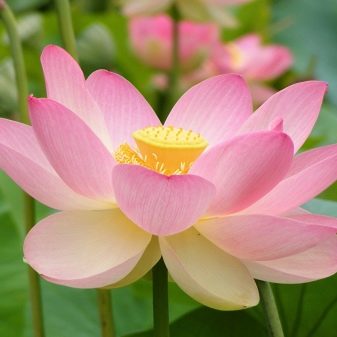
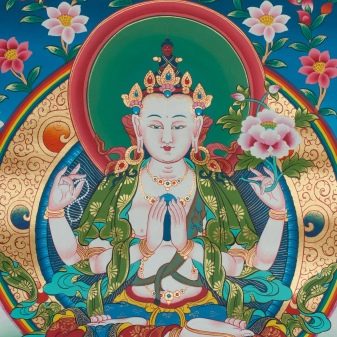
This is the legend of a compassionate youth. His mercy was so great that even after becoming completely liberated, he remained in samsara to help all living beings on Earth until the moment they find their way and receive release from the shackles of bad karma.
He was pure and innocent, because he is always portrayed in white colors. The young man's first pair of hands are folded in a prayer gesture - thus, the figure seems to symbolize an appeal addressed to higher powers with the intention of saving people from pain and suffering. In the other two hands he holds a lotus flower, which in the Vedas personifies purity and intelligence, as well as a rosary made of crystal, symbolizing the wish for welfare and prosperity.
The words of the six-syllable mantra correspond exactly to this legend:
- OM - symbolizes the sincerity of the mind and the purity of the words of the Buddha;
- pearl MANI - informs the Higher Forces about the striving of those living on Earth to get rid of the shackles of consciousness;
- lotus PADME - symbolizes spiritual purity and absolute wisdom;
- the sound HUM means the complete union of knowledge and practice.
The sacred Vedic text was compiled in the sacred language for all Buddhists - Sanskrit, it suggests several versions of the interpretation of words. That is why "Om Mani Padme Hum" in the literal sense cannot be accurately translated. Literally the mantra can be translated as follows: "O pearl in the very center of the lotus."
The practical meaning of the mantra is interpreted on the basis of explaining the power of each of its words separately.
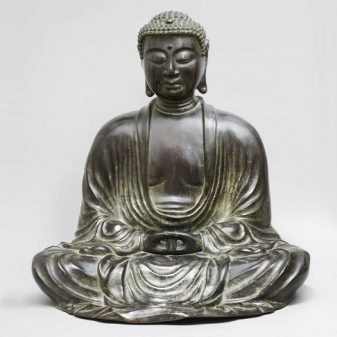
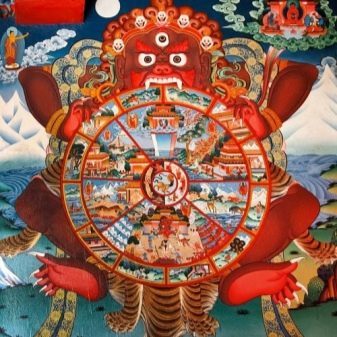
According to Tibetan ideas, there are 6 main worlds, where the human soul rushes about based on its mental purpose. According to the teaching, reciting a mantra greatly reduces the time spent by the soul in the circles of birth and death. Avalokitesvara helps people to free the soul from any negative inclinations. It is no coincidence that the sounds of the sacred text have a powerful effect on the practitioner's stay in each of the worlds.
OM - is responsible for the world of the demigods. The main negative thoughts and actions here are associated with excessive pride and vanity. The recitation of the mantra transforms them and thus closes the rebirth in the circle of the demigods.
MA - belongs to the world of titans and other local residents of the Pantheon. The main negative emotion is competition and constant rivalry. Reading the syllable "MA" changes them, frees them from rebirth among angry beings.
NO - symbolizes the world of people. Excessive attachments and false illusions rule here. Saying "NO" aloud, karma is purified and further rebirth in the human world is closed.
PE (PAI) - belongs to the animal circle, the main manifestation of which is ignorance. Reading sound protects against rebirth in such a space.
IU - belongs to the circle of hungry spirits, which have always been driven by greed and greed. Performing the sounds "ME" frees a person from rebirth in their circle.
HUM - exactly correspond to hell, where cruelty and hatred dominate. The HUM sound clears a person of this negative energy.
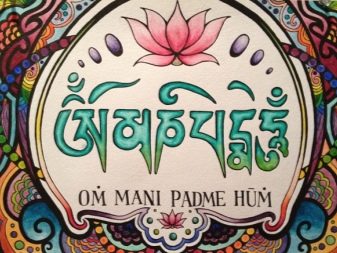
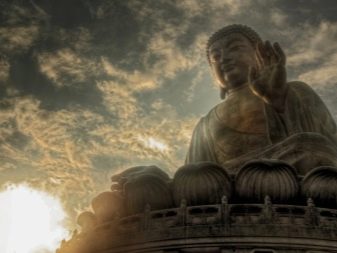
What gives?
If you read Om Mani Padme Hum an infinite number of times, then the benefits will also be infinite. You will forever renounce any worries and worldly burdens of life, be filled with harmony, your brow will illuminate with absolute happiness. The mind will open towards compassion and love, you will feel as if you have awakened from a long and heavy sleep.
A single reading relieves negative karma from five offenses, repeated reading allows you to achieve four important qualities for adherents of Buddhism:
- rebirth in a clean space;
- the opportunity to see the Buddha and the Divine light after death;
- receiving gifts from the Higher powers throughout life;
- rebirth into a happy, light being.
It is believed that if a practitioner has recited at least 10 rounds of this mantra 108 times each, then the next 7 generations of his descendants will not be reborn in one of the lower worlds, since the body of a person practicing this ritual receives a blessing. He transfers his power and his holiness to people, plants, animals, as well as water and food that he touches.
If a practitioner who has read 10 circles of the sacred text "Om Mani Padme Hum" bathes in any body of water, be it a river, ocean or sea, then the water with which his physical shell came into contact will acquire the power of the mercy of the Higher Forces.
This water, in turn, will cleanse and protect the millions of creatures living in it from the intense suffering sent to them from the lower worlds.
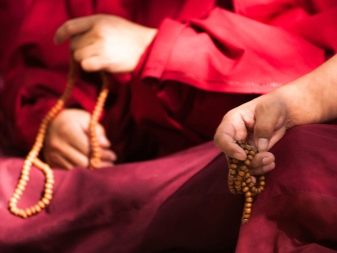

If the yogi moves along the road and his body is blown by the wind, then his vortices will carry positive energy to insects and birds. Their negative karma will be purified, and in the future they will gain a happy rebirth. In the same way, if such a practice touches other people, hugs them or heals them, the bad program of their karma is neutralized, and they receive divine blessing and purity.
Others try to stay close to such a person. This is not surprising, because touch liberates all other sentient and intelligent beings. Even one breath of this yogi, touching the skin of others, can relieve their suffering. The powerful power of this six-syllable mantra protects if the practitioner is in danger of being attacked by an animal, a poisonous snake, or an unkind person. They will not be able to harm him at the moment when he chants his mantra. Reading the sacred text blocks the danger of actions on the part of enemies and protects against robbery.
By relying on the Buddha's mantra, you will forever free yourself from the risk of punishment from the law or misfortune in court proceedings. No poisons can harm you. And the expectant mother, who will perform the mantra throughout her pregnancy, will give birth easily, quickly and without pain.
Yogis who regularly read the sacred words will forever be reliably protected from any harm caused by evil thoughts or black magic.


Technique of execution
Before you start reading the mantra, you need to understand that this sacred text in no case should be pronounced with a bad purpose, evil or selfish intent. If you do not clear your thoughts before practice, the result can be the most unpredictable.
The most important role in the recitation of the "Om Mani Padme Hum" mantra is played by the mental attitude. You don't have to pronounce the words automatically, mechanically humming. You must have strong faith in the power of this prayer text. A person should be fully concentrated on the vibration that the sounds of the mantra create. You need to perform the text with a sense of absolute calmness, pacification and peace of mind.
The very first days of reciting the mantra are best done in a quiet place, so that no one and nothing can distract from the practice. To make the appeal to the Universe more effective, you can additionally resort to meditation. It is advisable to practice the mantra in the lotus position, the back should be straight, the slightest tension in the body is unacceptable. The text "Om Mani Padme Hum" should be recited continuously, continuously. In this case, all syllables should be pronounced clearly. To enhance the effect of the text on consciousness, it is better to close your eyes.
During the first 30 days, the mantra must be performed 108 times for each approach. In general, this practice takes about 20 minutes; for the convenience of counting, you can use a rosary. Experienced yogis practice a 12-hour performance of the sacred text.
If you do not have the opportunity to prepare for singing, then the text can be pronounced mentally. Listening to the mantra with headphones is allowed.


Rendering rules
The sacred text "Om Mani Padme Hum" must be read in conjunction with visualization techniques. In the course of the prayer, one should imagine radiant nectar coming from the Buddha of Mercy. During the performance of the mantra, it is necessary to imagine an old-armed Buddha who embraces all living beings on Earth, to feel the radiant radiance that emanates from him. Feel with your whole body how this light illuminates your soul. Mentally draw a picture of how darkness and gloom dissipate under these rays, and with them all worries, adversities and problems go away. The rays of light expel all negative emotions, and the practitioner's consciousness is completely purified. When chanting a mantra, you can also imagine that Buddha has endowed you with his positive qualities. You should feel how your body and spirit are filled with boundless mercy and compassion for others.
When reading a prayer, strong faith is required, otherwise you will not be able to achieve the desired result. In conclusion, we will tell you an old legend. Once upon a time in Tibet there was a man who, throughout his life, sought to convert his mother. But the woman did not want to read sacred texts, the only mantra she learned was “Om Mani Padme Hum”. Unfortunately, her negative karma prevailed over the good, so after death the woman ended up in hell. Then her son went after her to try to bring her out of the underworld. Seeing the child, the mother was able to recite her mantra, since she often recited it during her lifetime. At that very moment, everyone who heard these secret words managed to get out of hell. This story ends with a very edifying "This is the power of this mantra."

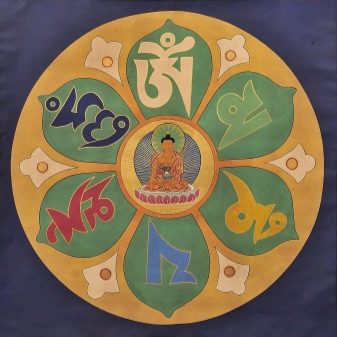
In the next video you can hear the powerful mantra "Om Mani Padme Hum".








